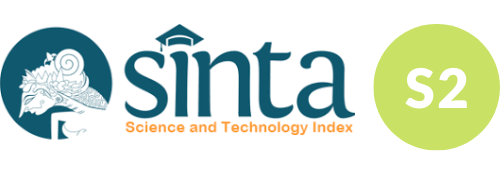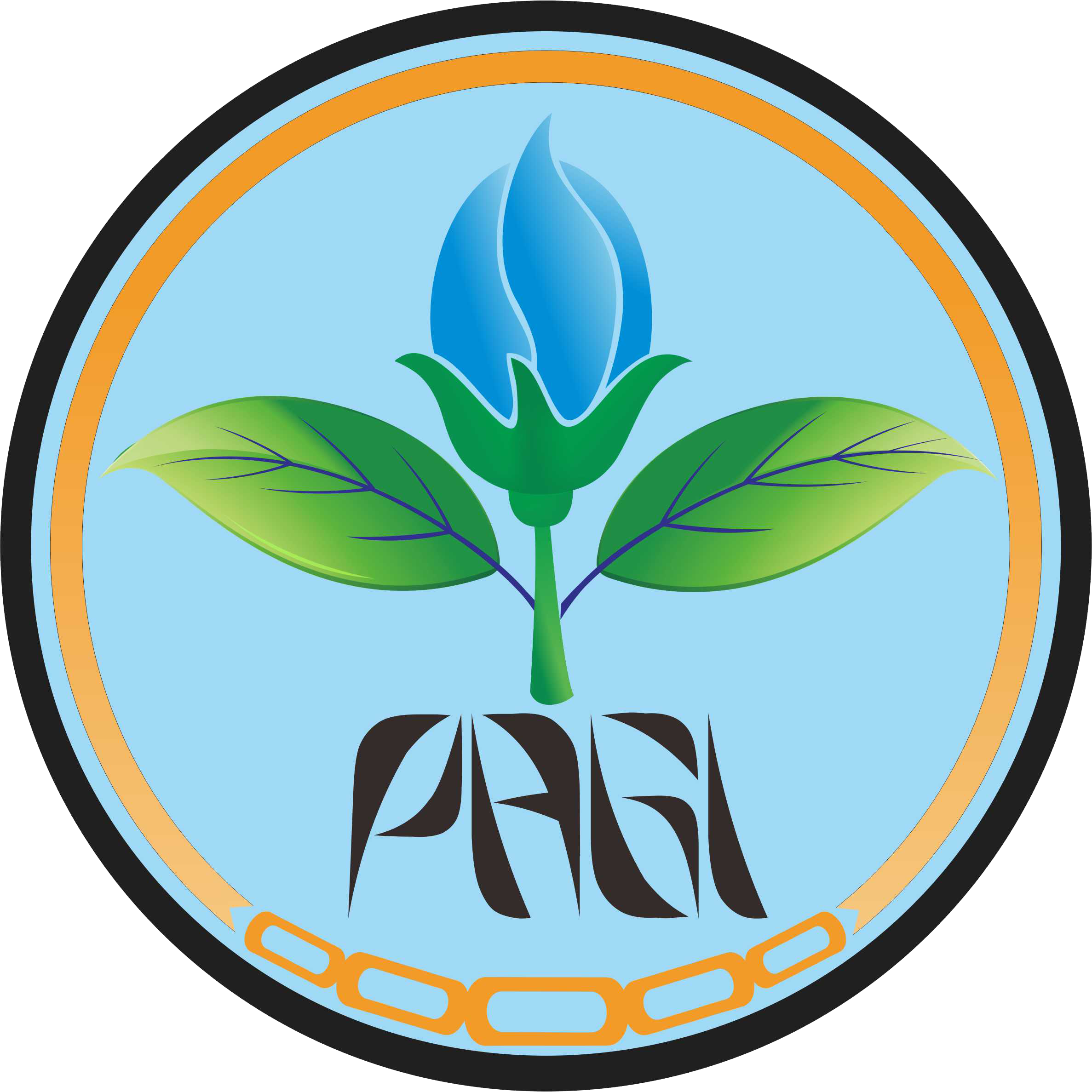Potential of Bay Leaf as Tablet Fumigant against Cadra cautella (Walker) (Lepidoptera: Pyralidae)
Abstract
Bay leaf contain active ingredients that have potential as a botanical fumigant against stored product pests. Using bay leaves as tablet fumigant has been limited to controlling stored product pests from the order Coleoptera. It has not been used to control stored product pests from the order Lepidoptera. Therefore, this research aimed to determine the effect of bay leaf tablet fumigants on the developmental stages of C. cautella. This research consisted of six different concentration levels (i.e., 0; 1; 2; 3; 4; and 5 ml l-1 air) repeated five times and arranged with a Completely Randomized Design (CRD). The observed variables were the mortality on the developmental stages of C. cautella. The results showed that mortality of eggs, larvae, and adults of C. cautella was higher (100%) at 3, 4, and 5 ml l-1 air than other concentrations. The LC50 values on eggs, larvae, and adults of C. cautella were (0.956, 0.982, 1.221 ml l-1 air at 24 hours), (0.912, 0.952, 0.895 ml l-1 air at 48 hours), and (0.502, 0.938, 0.880 ml l-1 air at 72 hours), respectively.
Keywords
Full Text:
PDF(EN)References
Abdelgaleil SAM, Gad HA, Ramadan GRM, El-Bakry AM, El-Sabrout AM. 2024. Monoterpenes: chemistry, insecticidal activity against stored product insects and modes of action—a review. Int J Pest Manag. 70(3):267–289. https://doi.org/10.1080/09670874.2021.1982067.
Ahmad MF, Ahmad FA, Alsayegh AA, Zeyaullah M, AlShahrani AM, Muzammil K, Saati AA, Wahab S, Elbendary EY, Kambal N, et al. 2024. Pesticides impacts on human health and the environment with their mechanisms of action and possible countermeasures. Heliyon. 10(7):e29128. https://doi.org/10.1016/j.heliyon.2024.e29128.
Akinneye JO, Akinwotu S, Ologundudu FA, Salawu O, Akinyemi M, Owoeye AJ. 2022. Management of store pest of cocoa Ephestia cautella (Lepidioptera:Pyralidae) using the powder and ethanolic oil extract of Zingiber officinales. Int J Trop Insect Sci. 42(2):1323–1330. https://doi.org/10.1007/s42690-021-00650-0.
Akinneye JO, Ogungbite OC. 2016. Entomotoxicant potential of some medicinal plant against Ephestia cautella infesting cocoa bean in storage. Int J Appl Sci Eng. 14(1):59–68.
Arbogast RT, Leonard Lecato G, Van Byrd R. 1980. External morphology of some eggs of stored-product moths (Lepidoptera pyralidae, gelechiidae, tineidae). Int J Insect Morphol Embryol. 9(3):165–177. https://doi.org/10.1016/0020-7322(80)90013-6.
Astuti LP, Sartika PD, Mutala’liah, Wulandari R, Ramadhan NT. 2024. Survival and development of Cadra cautella (Walker) (Lepidoptera: Pyralidae) on cocoa bean and cocoa powder. J Entomol Indones. 21(1):35–40. https://doi.org/10.5994/jei.21.1.35.
Ayvaz A, Karaborklu S, Sagdic O. 2009. Fumigant toxicity of five essential oils against the eggs of Ephestia kuehniella zeller and Plodia interpunctella (Hübner) (Lepidoptera: Pyralidae). Asian J Chem. 21(1):596–604.
Casida JE, Durkin KA. 2013. Anticholinesterase insecticide retrospective. Chem Biol Interact. 203(1):221–225. https://doi.org/10.1016/j.cbi.2012.08.002.
Damayanti RR, Himawan T, Astuti LP. 2013. Penghambatan reproduksi Rhyzopertha dominica F. (Coleoptera: Bostrichidae) menggunakan fumigan ablet berbasis minyak mimba. J HPT. 1(3):17–26.
Gautam SG, Opit GP, Margosan D, Tebbets JS, Walse S. 2014. Egg morphology of key stored-product insect pests of the United States. Ann Entomol Soc Am. 107(1):1–10. https://doi.org/10.1603/AN13103.
Hagstrum DW, Klejdysz T, Subramanyam B, Nawrot J. 2013. Atlas of stored-product insects and mites. Minnesota (US): AACC International, Inc.
Hasby, Astuti LP, Rizali A. 2024. Bioactivities of bay leaf (Syzygium polyanthum) fumigant tablets againts Araecerus fasciculatus (De Geer) (Coleoptera: Anthribidae). J Entomol Indones. 21(2):118–129. https://doi.org/10.5994/jei.21.2.118.
Hill DS. 2002. Pests of stored foodstuffs and their control. Dordrecht (NL): Springer Netherlands.
Ikawati S, Dhuha M, Himawan T. 2017. Bioactivity of Citrus hystrix D.C. leaf extract against cigarette beetle Lasioderma serricorne (F.). J Trop Life Sci. 7(3):189–196. https://doi.org/10.11594/jtls.07.03.01.
Ikawati S, Himawan T, Abadi AL, Tarno H. 2020. Fumigant and feeding deterrent activity of essential oils against Cryptolestes ferrugineus (Stephens) (Coleoptera: Laemophloeidae). Biodiversitas. 21(9):4301–4308. https://doi.org/10.13057/biodiv/d210948.
Isikber AA, Alma MH, Kanat M, Karci A. 2006. Fumigant toxicity of essential oils from Laurus nobilis and Rosmarinus officinalis against all life stages of Tribolium confusum. Phytoparasitica. 34(2):167–177. https://doi.org/10.1007/BF02981317.
Kathirvelu C, Muthukumaran N, Kanagarajan R. 2019. Fumigant effect of tablet formulation of certain botanicals against key pests of stored produce in laboratory conditions. J Appl Sci Comput. 6(6):914–923.
Kheloul L, Anton S, Gadenne C, Kellouche A. 2020. Fumigant toxicity of Lavandula spica essential oil and linalool on different life stages of Tribolium confusum (Coleoptera: Tenebrionidae). J Asia Pac Entomol. 23(2):320–326. https://doi.org/10.1016/j.aspen.2020.02.008.
Lin YY, Tang CK, Saska P, Güncan A, Yao MC, Tuan SJ. 2023. Demographic characteristics of Cadra cautella on brown rice at different temperatures: Do diapausing individuals contribute to population growth rate? J Stored Prod Res. 101:102073. https://doi.org/10.1016/j.jspr.2022.102073.
Machuca-Mesa LM, Turchen LM, Guedes RNC. 2024. Phosphine resistance among stored product insect pests: A global meta-analysis-based perspective. J Pest Sci (2004). 97(3):1485–1498. https://doi.org/10.1007/s10340-023-01713-6.
Mantzoukas S, Lagogiannis I, Pettas I, Korbou G, Magita A, Papadopoulou A, Trianti M, Eliopoulos PA, Karanastasi E. 2019. Postharvest treatment of Tribolium confusum Jacquelin du Val adults with commercial biopesticides. Agric. 9(10):226. https://doi.org/10.3390/agriculture9100226.
Mario MB, Astuti LP, Hsu JL, Kafle L, Fernando I. 2023. Bioefficacy of eight different plant powders applied as fumigants against the adzuki bean weevil, Callosobruchus chinensis. Crop Prot. 167:106200. https://doi.org/10.1016/j.cropro.2023.106200.
Nayak MK, Daglish GJ, Phillips TW, Ebert PR. 2020. Resistance to the fumigant phosphine and its management in insect pests of stored products: A global perspective. Annu Rev Entomol. 65(1):333–350. https://doi.org/10.1146/annurev-ento-011019-025047.
Nazari AH, Nebapure SM, Rana VS. 2022a. Bioactivity of Murraya paniculata against almond moth Cadra cautella and leaf-eating caterpillar Spodoptera litura. Natl Acad Sci Lett. 45(1):25–30. https://doi.org/10.1007/s40009-021-01083-6.
Nazari AH, Nebapure SM, Rana VS, Shakil NA. 2022b. Chemical composition and fumigation toxicity of essential oil from Murraya paniculata L. (Jack) against almond moth, Cadra cautella (Walker). Allelopath J. 55(1):93–104. https://doi.org/10.26651/allelo.j/2022-55-1-1373.
Nurlely, Putra AMP, Nurrochmad A, Widyarini S, Fakhrudin N. 2024. Extraction, phytochemicals, bioactivities, and toxicity of Syzygium polyanthum: A comprehensive review. J HerbMed Pharmacol. 13(3):381–389. https://doi.org/10.34172/jhp.2024.51454.
Oyewo EA, Amo BO. 2018. Assessment of damage caused by Ephestia cautella (Walker) to stored cocoa beans. Ghana J Agric Sci. 52:25–31.
Paul A, Radhakrishnan M, Anandakumar S, Shanmugasundaram S, Anandharamakrishnan C. 2020. Disinfestation techniques for major cereals: A status report. Compr Rev Food Sci Food Saf. 19(3):1125–1155. https://doi.org/10.1111/1541-4337.12555.
Rahayu FA, Astuti LP, Rizali A. 2024. Development of Cadra cautella Walker (Lepidoptera: Pyralidae) on peanuts, almonds, and cashews. Res J Life Sci. 10(2):98–104. https://doi.org/10.21776/ub.rjls.2023.010.02.5.
Rees D. 2004. Insects of stored products. Collingwood (AU): CSIRO Pub.
Samsudin, Soesanthy F, Syafaruddin S. 2016. Repellency and insecticidal activity of some botanical extracts and oils on storage pest of Ephestia cautella. J Tanam Ind dan Penyegar. 3(2):117–126.
Sartika PD, Astuti LP, Rahardjo BT. 2022. Bioactivity of bay leaf as botanical fumigant against Rhyzopertha dominica (F.) (Coleoptera: Bostrichidae). J Entomol Res. 46(3):500–504. https://doi.org/10.5958/0974-4576.2022.00088.3.
Singh KD, Mobolade AJ, Bharali R, Sahoo D, Rajashekar Y. 2021. Main plant volatiles as stored grain pest management approach: A review. J Agric Food Res. 4:100127. https://doi.org/10.1016/j.jafr.2021.100127.
Stejskal V, Vendl T, Aulicky R, Athanassiou C. 2021. Synthetic and natural insecticides: Gas, liquid, gel and solid formulations for stored‐product and food‐industry pest control. Insects. 12(7):590. https://doi.org/10.3390/insects12070590.
Suthisut D, Fields PG, Chandrapatya A. 2011. Fumigant toxicity of essential oils from three Thai plants (Zingiberaceae) and their major compounds against Sitophilus zeamais, Tribolium castaneum and two parasitoids. J Stored Prod Res. 47(3):222–230. https://doi.org/10.1016/j.jspr.2011.03.002.
Uwamose MO, Nmor JC, Okulogbo BC, Ake JE. 2017. Toxicity of lemon grass Cymbopogon citratus powder and methanol extract against rice weevil Sitophilus oryzae (Coleoptera: Curculionidae). J Coast Life Med. 5(3):99–103. https://doi.org/10.12980/jclm.5.2017j6-279.
Weaver DK, Subramanyam B, editors. 2000. Botanicals. In: Alternatives to Pesticides in Stored-Product IPM. Boston, MA: Springer US.
Wilbur DA. 1971. Stored grain insect. In: Pdaft RE, editor. Fundamentals of Applied Entomology. 2nd ed. New York (US): Macmillan Publishing.Refbacks
- There are currently no refbacks.






